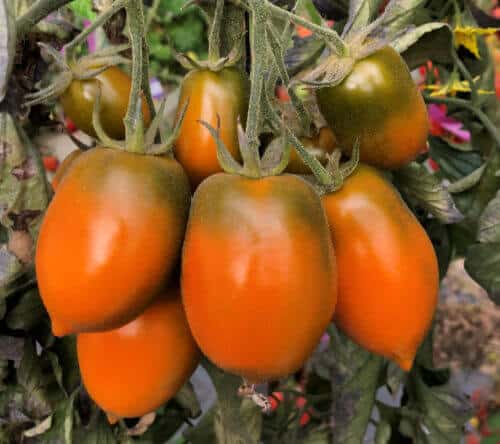A research team from the Institute of Life Sciences and the Faculty of Agriculture at the Hebrew University has developed a new variety of tomato, rich in the antioxidant zeaxanthin that may inhibit many degenerative diseases. Adding the antioxidant to the daily diet will help reduce the incidence of degenerative diseases, especially AMD, which causes blindness in adults

The researchers of the Hebrew University, led by Prof. Yossi Hirschberg, an expert in genetics, molecular biology and genetic engineering in plants from the Institute of Life Sciences at the Hebrew University of Jerusalem, succeeded in creating a new and special tomato which they named "Xanthomato". The tomato contains a high concentration of an antioxidant that inhibits age-related blindness.
The scientific work began with the research team's search for an answer to the low availability in food of the antioxidant "zeaxanthin", known as an inhibitor of many degenerative diseases and preventing or retarding AMD (in Hebrew "age-related macular degeneration"), which is the main cause of blindness in developed countries. In fact, zeaxanthin is one of the antioxidants that protect the photoreceptors in the retina from damage caused by strong blue light. It can be found mainly in corn, orange pepper pumpkin and citrus fruit, and in very low concentrations also in hotel, mango, apricot and peach. Zeaxanthin is a natural yellow pigment from the carotenoid family found mainly in plants where it helps in the photosynthesis process.
How can we increase the availability of the antioxidant zeaxanthin in our diet, and how can we increase its amount in the fruits and vegetables we eat? To solve this, the researchers chose to enrich the antioxidant in the tomato fruit, which is a very common vegetable around the world (about 180 million tons of tomatoes are produced per year). "The result was impressive: we developed a new food source that contains a high concentration of natural zeaxanthin. The tomato was chosen as the target plant, because it is the second most important vegetable crop in the world, and its fruits synthesize and accumulate carotenoids, mainly lycopene," noted Prof. Hirschberg this week.
The development of the new tomato was done with the help of different methods at the same time - classical genetic cultivation through hybridization and genetic engineering. The results of the study showed that precisely the genetic cultivation between different varieties succeeded in increasing the concentration of zeaxanthin in the fruit more than the genetic engineering. This result is an advantage at the marketing level because of the problematic use of genetic engineering in some countries. In the end, the researchers succeeded in creating a tomato variety in whose fruits the zeaxanthin makes up more than half of the total pigments in it, and this is in addition to other vitamins and antioxidants found in the regular tomato. Although the "goji berry" fruit, which grows mainly in the Far East, has a higher concentration of zeaxanthin, it is a marginal agricultural product and much more expensive than a tomato. The amount of this antioxidant in the tomato was higher than any other fruit or vegetable that is common in the Israeli food basket, 7 times more zeaxanthin than in corn, which is, as mentioned, the main source of this antioxidant in the diet today. "To the best of our knowledge, this is the highest level of zeaxanthin achieved in any major agricultural crop in the world," the researchers noted in their article.
Thanks to the success in the development of the enriched tomato and due to the fact that its production is relatively simple and its shape and even its taste are relatively preserved, the researchers hope that the mass distribution of the xanthotomato will contribute to human health and reduce the incidence of degenerative diseases, especially AMD. Due to its unique color, the researchers gave the tomato the name "Xantomato", a combination of the word xanthophyll (the group of substances to which zeaxanthin belongs) and the word tomato in Polish. "The 'Xanthomato' may increase the amount of zeaxanthin in the human diet and serve as a raw material for industrial applications," the researchers emphasized in their article.
The research work was done by the student Uri Karniel from the laboratory of Prof. Yossi Hirschberg, in collaboration with the student Amit Koch and Prof. Dani Zamir from the Faculty of Agriculture at the Hebrew University, and was recently published in the Plant Biotechnology Journal. The "Yishom" company of the Hebrew University submitted a patent application for the new technology.

One response
How fun that there will be tomatoes that can already help people with problems mentioned in the article. And is it possible to buy the aforementioned tomatoes in the markets? And if so, where?